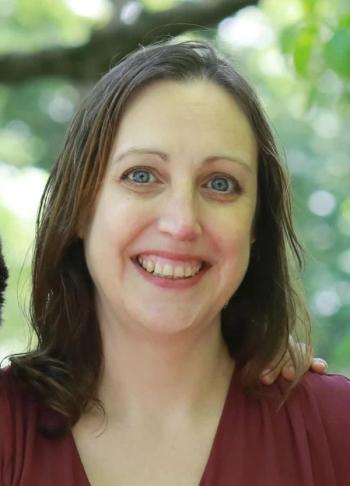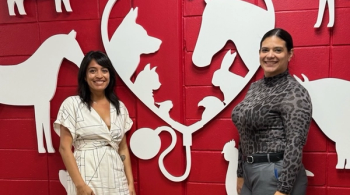
Sky is not the limit for NASA veterinarian
As the space shuttle Atlantis blasted out of the Kennedy Space Center in Florida for its final mission in early July, NASA's chief veterinarian Alex Dunlap says it's not the end, but the beginning of a new era.
NATIONAL REPORT — As the space shuttle Atlantis blasted out of the Kennedy Space Center in Florida for its final mission in early July, NASA's chief veterinarian Alex Dunlap says it's not the end of an era, it's the beginning of a new one.
In fact, Dunlap says, the next decade will usher in some exciting times for researchers and veterinarians when it comes to space exploration.
"Companies such as Virgin Galactic, XCor and several others, which will fly suborbital flight profiles and which will primarily cater to space tourists, are also considering flying research flights," he says. "This would give investigators the opportunity to fly investigations which could use research animal models. I foresee a need for veterinary oversight which could include veterinarians as crew members," he says.
And that's perfect for a veterinarian that has rolled his interests in medicine, research, animal welfare and flying into one career.
"NASA is certainly my first love," he says. "It is fantastic working for the space program."
Born in Honolulu, Hawaii, and raised in West Memphis, Ark., Dunlap grew up surrounded by animals, even raising chickens and quail. "I thought putting the two interests together—animals and medicine—would make a nice career," he says, adding he earned undergraduate degrees in animal science and domestic animal biology.
While leaning toward veterinary medicine, Dunlap was also interested in medical school and decided to apply—and was accepted—to both. He chose to pursue veterinary medicine first at Louisiana State University School of Veterinary Medicine.
Graduating in 1989, Dunlap spent three years working at a mixed-animal practice in Tennessee before deciding to go to medical school.
"I like school, education and learning, and I had an opportunity to go to medical school so I went," he says. "I certainly did not plan on going to both medical and veterinary school."
During medical school at the University of Tennessee, Dunlap continued to moonlight as a veterinarian on weekends and even treated a lot of his classmates' animals. "My veterinary background was very helpful in getting through medical school and continues to help me," he says. "I don't separate the two mentally so it is a fluid thought process for me when thinking about the two disciplines."
It was during his last year of medical school that NASA floated into the picture.
Dunlap applied and was selected to be a crew member for STS-90 (Neurolab), a shuttle flight dedicated to researching how the brain and nervous system function in space.
"Four of us were initially selected, and we knew at that time that two would fly and two would be backups," he says. Dunlap was a first alternate for the flight. "I had hopes of being reassigned to another flight but it just didn't happen."
During the two-year training process, Dunlap spent one year learning how to perform the experiments that would be on the space shuttle. During the second year, he learned how to function and work in the space shuttle and how to operate any onboard systems that he would have had to operate.
"I had always wanted to work for NASA and become an astronaut and was very fortunate to have been given the opportunity that I was given," he says.
STS-90 flew the largest number of animals ever flown in space—more than 90 rodents among approximately 2,000 total living beings, Dunlap says.
Once the flight was finished, Dunlap and the other payload specialists, returned to their day jobs. For him, that meant returning to medical school to complete his residency in family medicine.
"I was involved with four shuttle flights during medical school," Dunlap says. "I had to get permission to take a couple weeks off. The dean said "OK, I'll let you do it one time, but not again," Dunlap remembers. "I did it three more times."
And Dunlap says being involved with those four missions were some of the most exciting times of his life.
"It was an opportunity to experience things that I would not have had the opportunity to do otherwise," he says. "It involved extensive travel—overseas and to multiple universities and colleges to visit labs and learn their experiments. It also involved flying in NASA aircraft and spending a large amount of time in mockup trainers which resemble the actual shuttle environments."
Finishing his two-year residency in 2000, Dunlap temporarily put NASA behind him and began working as a physician in emergency medicine at St. Bernard's Regional Medical Center in Jonesboro, Ark. What started as a moonlighting position during residency turned into the perfect job.
And if he wasn't busy enough in the hospital, one year after joining the ER, Dunlap accepted the position of chief veterinarian for NASA. Now he is responsible for a multitude of activities like ensuring that NASA complies with all federal laws and regulations regarding the care and use of laboratory animal medicine. He also trains crew members to take care of the animals that are present on the shuttle.
"I am also present for launch and landing for shuttle flights that have animal payload and will split time at NASA mission control with Terry Blasdel, DVM, of Johnson Space Center in Houston," he says. "We are available during flights that have animal payloads in the event that there is a problem or if the crew has any questions."
Dunlap says they are in the middle of some "pretty neat research—testing the toxicity of moon dust."
"We have taken actual moon dust and aerosolized it," he says. "We are exposing that to mice and testing to see how it affects them. If, and when, we go back to the moon, we want to make sure we do nothing to endanger humans."
Dunlap said the Kennedy Space Center has a state-of-the-art animal-care facility.
"We bring the animals—mostly mice—in a few weeks before launch. They have to be pathogen free, primarily for crew safety. It has been found that a human's immune system is depressed in space," he says. "There is a selection process (for the mice) to see who's fittest to fly."
Then, 24 hours before the flight, the animals are loaded into cages in a clean room. Dunlap has even been able to take the animals out to the launch pad several times.
"When I first started, people said it would not be possible to do both—practice medicine and NASA," he says. "But being in the ER allows me to be more flexible. I wouldn't be able to do this if I had my own practice."
Dunlap estimates he spends 50 percent of his time with NASA and 50 percent of his time in the emergency room.
"It gets a little complicated around launch time," he admits, adding, "I have been in the ER answering NASA questions. It certainly challenges your ability to multitask."
But to help with his sometimes crazy schedule—he is on the road at least once a month—Dunlap has a solid support system at NASA, in the ER and at home.
Besides Blasdel, Dunlap also relies on Alvin Moreland, DVM, at the Kennedy Space Center and Joanne Blum, DVM, at Ames Research Center in Moffett Field, Calif. Plus David Liskowski, PhD, helps with animal policy development at NASA headquarters.
Dunlap's wife Trudy, also a veterinarian, keeps things running smoothly at home.
After 10 years of balancing two careers, Dunlap said he would hate to make a choice between veterinary medicine and his work in the ER.
"I never dreamed I would be a NASA veterinarian," Dunlap says.
"Follow your dream. And don't ever, ever give up."
Newsletter
From exam room tips to practice management insights, get trusted veterinary news delivered straight to your inbox—subscribe to dvm360.






